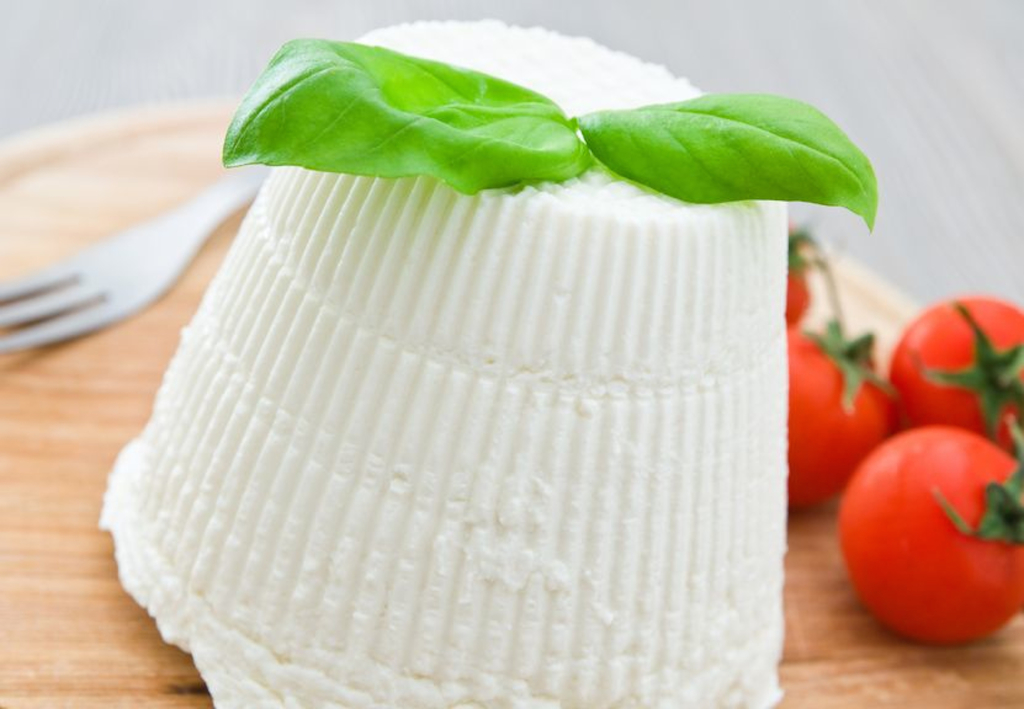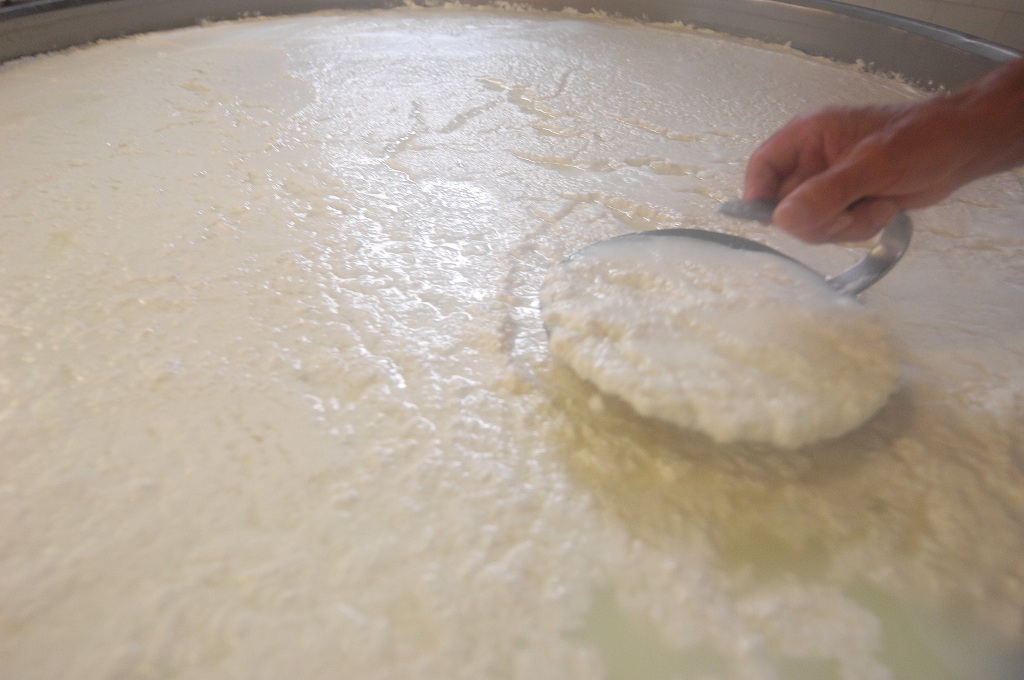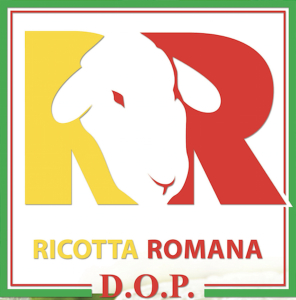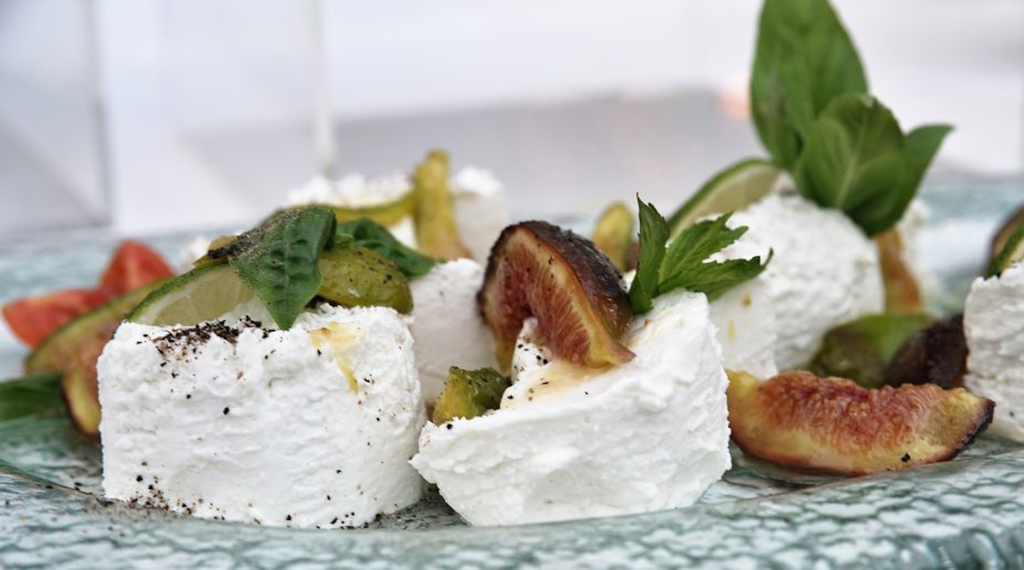 Sheep's milk of the highest quality, coming only from the territories of Latium, certified and controlled companies, 0% frozen milk, no chemicals, no added fat. These are the ingredients which characterize the ‘Ricotta Romana’ cheese. It is white with pearly reflections, soft and firm, clearly moist, delicate and granular. Its intense and characteristic aroma reminds the pastures of Latium, rich in Mediterranean essences and mineral waters. Its flavour is very delicate and tends to sweet taste.
Sheep's milk of the highest quality, coming only from the territories of Latium, certified and controlled companies, 0% frozen milk, no chemicals, no added fat. These are the ingredients which characterize the ‘Ricotta Romana’ cheese. It is white with pearly reflections, soft and firm, clearly moist, delicate and granular. Its intense and characteristic aroma reminds the pastures of Latium, rich in Mediterranean essences and mineral waters. Its flavour is very delicate and tends to sweet taste.
The raw material with which it is produced, that is to say whey, is not a low-fat one and it is rich in noble and digestible proteins. This allows obtaining a product rich in flavour, but with important nutritional qualities, among which the richness in calcium stands out. Sheep's milk is one of the main excellences of Italian agriculture and sheep pastures are carefully supervised by the farmers, in order to avoid stress to the animals and preserve this healthy natural environment. This attention gave rise to the appreciation by the European Community, with the acknowledgement of the Protected Designation of Origin.
The way Ricotta becomes Roman
Ricotta means ‘twice-cooked’ and it is a product spread throughout Italy. What makes 'roman' a common ricotta is the origin of the whole sheep's milk from the land of Latium and the execution of all the operations of manufacturing and processing in the Latium Region only. Natural and human factors confer the quality and organoleptic characteristics of the product, such as the very sweet taste of the whey, due to the feeding of sheep with the natural pasture grasses characteristic of this territory. It is not allowed to exceed 10% forage. In order to obtain the ‘roman’ denomination, in addition the human intervention is necessary. The breaking of the curd, carried out by dairymen, on the basis of skills and experience handed down for centuries in the whole area interested by this DOP, and the transhumance, that is to say the transfer of the flocks in mountain areas in order to escape from the heat of summer, are the actions which make unique this fresh cheese. These skills and techniques in Latium are an ancient heritage and are the subject of a continuing training, in order to avoid dispersing the roman traditions in the way of producing the ricotta. 
In order to obtain it, the whey is heated to about 90°C and kept in gentle shaking, so promoting its coagulation in the form of small flakes. These flakes are gently gathered and placed in special conical containers called 'fuscelle', so separating whey from curd. The extraction of ricotta is not a simple operation. It requires skill and sensitivity. The dairyman must have an excellent ear for music, because he beats the boiler with a stick and, based on the sound it produces, carefully evaluates whether it is time to pull it out or wait until the formation of the curd is perfect. From this musical treatment, a ricotta which has a fine texture, white colour, and a delicate and sweet flavour is obtained.
From Latium to the world
Over 500,000 litres of sheep milk are produced in the countryside of Latium for the ricotta romana, for a record growth in household consumption, which since 2005 has continued to increase.
The competitive price has allowed an excellent spread on Russian markets, while in Europe, especially in France and Germany, the ricotta romana continues to be one of the most appreciated fresh Italian cheeses.
 The Ricotta is not subjected to ageing, but it is marketed fresh, after a manual salting of 90 days in truncated cone baskets in wickers, plastic, or metal with a maximum capacity of kg 2, or wrapped in parchment paper or in a vacuum. The packaging must bear on its label the designation ‘Ricotta Romana’, in addition to the Community logo, with clear and legible print characters. The logo of the product consists of a square formed by three lines of colour, like the Italian flag, and within it a stylized sheep’s head between the two capital letters ‘R’. The designation ‘Ricotta Romana’ must appear in Italian. The white colour of ricotta and the colours of the brand are the only distinguishing features of the packaging, in order to enhance at the best the territoriality of this product.
The Ricotta is not subjected to ageing, but it is marketed fresh, after a manual salting of 90 days in truncated cone baskets in wickers, plastic, or metal with a maximum capacity of kg 2, or wrapped in parchment paper or in a vacuum. The packaging must bear on its label the designation ‘Ricotta Romana’, in addition to the Community logo, with clear and legible print characters. The logo of the product consists of a square formed by three lines of colour, like the Italian flag, and within it a stylized sheep’s head between the two capital letters ‘R’. The designation ‘Ricotta Romana’ must appear in Italian. The white colour of ricotta and the colours of the brand are the only distinguishing features of the packaging, in order to enhance at the best the territoriality of this product. Good, fresh, and versatile all year round
The ricotta romana is consumed as fresh as it is, or as stuffing for special egg pasta, in particular ravioli and cannelloni, or simply accompanied by honey, cocoa, or coffee, and as a main ingredient in confectionery (for example the famous sicilian Cassata).
One of the traditional recipes is pasta with ricotta romana. It is prepared in a very simple way, by boiling g 300 of short pasta for 4 people. Aside, the seasoning is prepared with g 250 of ricotta romana mixed with a pinch of cinnamon, one of salt and one of icing sugar. Just before straining pasta, the seasoning must be mixed with three tablespoons of boiling water of pasta, adding plenty of freshly ground pepper.
